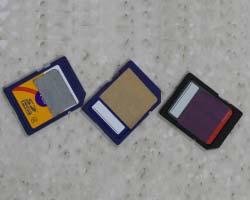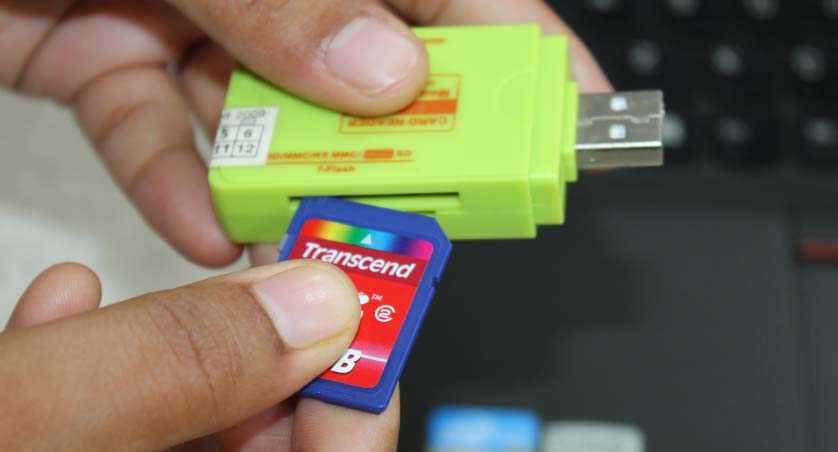Table of Contents
- Windows Data Recovery Software
- NTFS Data Recovery Software
- FAT Data Recovery Software
- Memory Card Data Recovery Software
- Choosing Memory Card Data Recovery Software Types
- » Types Of Memory Card Data Recovery Software
- Formatted Memory Card Data Recovery Software
- Video and Photo Memory Card Data Recovery Software
- iPod Data Recovery Software
- Zune Music Recovery Software
- File system for Windows/Mac
There are several types of memory cards available in the market, and each has its unique characteristics and capabilities. Here are some of the most common types of memory cards:

- ❖ SD (Secure Digital) Card: The SD card is one of the most widely used memory cards. The card comes in various storage sizes, ranging from 4GB to 512GB. The SD card is used in a range of devices, such as cameras, smartphones, tablets, and other digital devices. The SD card is also available in different speeds, such as Class 2, Class 4, Class 6, Class 10, UHS-1, and UHS-3, to support various data transfer rates.
- ❖ MicroSD Card: The microSD card is a small version of the SD card and is commonly used in smartphones, tablets, and other portable devices. The card comes in different storage sizes, ranging from 4GB to 512GB. The microSD card also has different speeds, such as Class 4, Class 6, Class 10, UHS-1, and UHS-3.
- ❖ CompactFlash (CF) Card: The CompactFlash card is commonly used in professional cameras and high-end digital devices. The card comes in different storage sizes, ranging from 16GB to 512GB. The CF card also has different speeds, such as UDMA 7, to support high-speed data transfer rates.
- ❖ Memory Stick (MS) Card: The Memory Stick card is developed by Sony and is commonly used in their products. The card comes in different storage sizes, ranging from 4GB to 256GB. The Memory Stick card is also available in different speeds, such as Class 4 and Class 10.
- ❖ xD-Picture Card: The xD-Picture card is developed by Olympus and Fujifilm and is commonly used in their products. The card comes in different storage sizes, ranging from 16MB to 2GB. The xD-Picture card also has different speeds, such as M and H.
- ❖ MultiMediaCard (MMC): The MultiMediaCard is a type of memory card that was developed by SanDisk and Siemens AG. The card comes in different storage sizes, ranging from 16MB to 512MB. The MMC card also has different speeds, such as Class 4 and Class 6.
- ❖ Secure Digital High Capacity (SDHC) Card: The Secure Digital High Capacity (SDHC) card is a variant of the SD card that can store up to 32GB of data. The card is commonly used in portable devices such as cameras, smartphones, and tablets.
- ❖ Secure Digital eXtended Capacity (SDXC) Card: The Secure Digital eXtended Capacity (SDXC) card is a variant of the SD card that can store up to 2TB of data. The card is commonly used in portable devices such as cameras, smartphones, and tablets.
- ❖ Ultra Direct Memory Access (UDMA) Card: The Ultra Direct Memory Access (UDMA) card is a type of CompactFlash card that is commonly used in professional cameras and high-end digital devices. The card has a high-speed data transfer rate of up to 167 MB/s.
- ❖ SmartMedia Card: The SmartMedia card is a type of memory card that was developed by Toshiba. The card comes in different storage sizes, ranging from 2MB to 128MB.
- ❖ Reduced-Size MultiMediaCard (RS-MMC): The Reduced-Size MultiMediaCard (RS-MMC) is a smaller version of the MultiMediaCard and is commonly used in portable devices such as smartphones.

SD Card, CF Card, XD Card, and Memory Stick are all different types of flash memory cards used to store data in digital devices such as cameras, camcorders, and smartphones. While they all serve the same purpose, there are differences in terms of their physical size, storage capacity, transfer speed, and compatibility with different devices.
- SD Card: SD stands for "Secure Digital." SD cards are the most popular type of memory card and are commonly used in digital cameras, video cameras, and other portable devices. They come in different sizes and storage capacities, ranging from a few gigabytes to several terabytes. The SD card is small in size and has a rectangular shape with notches on one side. SD cards can be easily inserted and removed from devices and are compatible with most devices that have an SD card slot. SD cards also have high transfer speeds, allowing for quick file transfers.
- CF Card: CF stands for "CompactFlash." CF cards are slightly larger than SD cards and are commonly used in high-end digital cameras and professional video cameras. They are also used in embedded systems, such as in industrial equipment, medical devices, and military applications. CF cards have high storage capacity, ranging from a few gigabytes to several terabytes, and have a robust design, making them more durable than SD cards. They also have faster write speeds, allowing for quicker transfer of data from the camera to the card. However, CF cards are less common and are not compatible with most devices.
- XD Card: XD stands for "Extreme Digital." XD cards are smaller than SD cards but are larger than microSD cards. They are used in some Fujifilm and Olympus digital cameras. They have a lower storage capacity compared to SD cards, ranging from 512MB to 2GB, and have slower write speeds. XD cards are not as widely used as SD cards and are not compatible with many devices.
- Memory Stick: Memory Stick is a type of flash memory card developed by Sony. They are commonly used in Sony digital cameras, camcorders, and gaming consoles such as the PlayStation Portable. Memory Stick cards have a sleek and slim design, and they come in different sizes and storage capacities, ranging from a few gigabytes to 2TB. Memory Stick cards have faster transfer speeds and are compatible with most Sony devices. However, they are not as widely used as SD cards and are not compatible with many devices from other manufacturers.
In summary, the main differences between SD cards, CF cards, XD cards, and Memory Stick are in their physical size, storage capacity, transfer speed, and compatibility with different devices. SD cards are the most common and widely used memory cards and are compatible with most devices. CF cards are larger and more robust, with faster write speeds, but they are less common and not compatible with most devices. XD cards are smaller and have lower storage capacity and slower write speeds, and they are not widely used. Memory Stick cards have faster transfer speeds and are compatible with most Sony devices.
Corrupted Memory Card
A corrupted memory card can cause the loss of important data, but there are several steps you can take to recover data and repair the card. In this article, we will discuss what to do if your memory card is corrupted and how to recover lost data.
- Step 1: Stop Using the Card The first step when dealing with a corrupted memory card is to stop using it. Continuing to use the card can further damage the data and make it more difficult to recover. Instead, remove the card from your device and store it in a safe place until you are ready to attempt data recovery.
- Step 2: Use a Data Recovery Software There are various data recovery software
options available that can help you recover lost data from a corrupted memory card. Some popular
data recovery software include Recuva, EaseUS Data Recovery, and Disk Drill.
To use a data recovery software, follow these steps:
Connect your memory card to your computer using a card reader or other device.
Open the data recovery software and select the memory card as the target device.
Scan the memory card to search for lost data.
Once the scan is complete, the software will display a list of recoverable files.
Select the files you want to recover and save them to your computer.
- Step 3: Format the Memory Card If you have successfully recovered your data,
it is important to format the memory card to repair any errors and prevent future data loss. To
format your memory card, follow these steps:
Insert the memory card into your computer using a card reader or other device.
Open "My Computer" or "This PC" and locate the memory card.
Right-click on the memory card and select "Format".
Select the file system you want to use (e.g., FAT32 or NTFS).
Click "Start" to begin the formatting process.
Once the formatting is complete, safely eject the memory card from your computer.
- Step 4: Repair the Memory Card If formatting the memory card does not solve the
problem, you may need to repair the card. There are various software options available that can
help repair a corrupted memory card, including the built-in Windows Disk Error Checking tool.
To use the Disk Error Checking tool, follow these steps:
Insert the memory card into your computer using a card reader or other device.
Open "My Computer" or "This PC" and locate the memory card.
Right-click on the memory card and select "Properties".
Click on the "Tools" tab and then click "Check Now".
Check the boxes next to "Automatically fix file system errors" and "Scan for and attempt recovery of bad sectors".
Click "Start" to begin the repair process.
Once the repair is complete, safely eject the memory card from your computer.
- Step 5: Replace the Memory Card If you have tried all of the above steps and
your memory card is still not working properly, it may be time to replace it.
While it is possible to recover data from a corrupted memory card, it is not always possible to repair the card itself.
When purchasing a new memory card, be sure to choose a reputable brand and select the appropriate type and capacity for your device.
In conclusion, a corrupted memory card can be frustrating, but there are several steps you can take to recover data and repair the card. If you are unable to recover your data or repair the card, it may be time to replace it. Remember to always back up your important files to prevent future data loss.